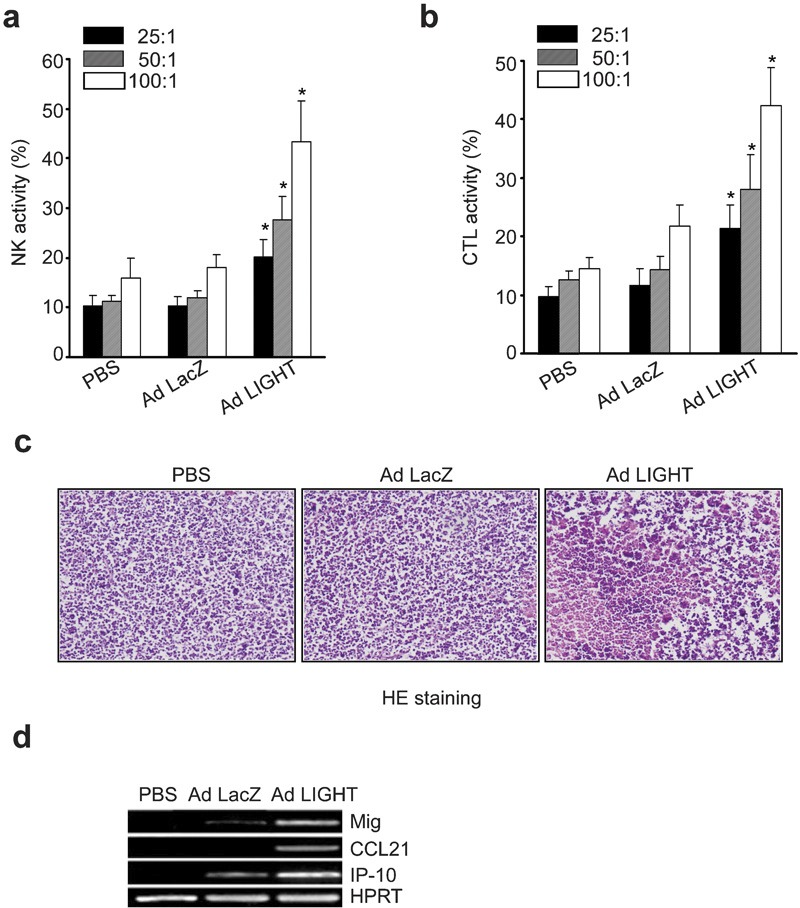Figure 5.

Intratumoral Ad LIGHT therapy elicits an effective immune response. (a) Five days after the last adenovirus injection, splenocytes were isolated from the tumor-bearing mice and used at different ratios as NK effector cells in cytolytic assays against YAC-1 target cells. NK activity was measured by a standard LDH assay. *P<0.05. (b) Spleen cells from the mice were cocultured with inactivated A20 cells (also treated with mitomycin-C, 100 µg/ml) for 6 days in the presence of recombinant mouse IL-2 (20 U/ml) and then collected for use as CTL effector cells. Splenocyte CTL activity was determined by a standard LDH release assay at effector/target ratios of 25∶1, 50∶1 and 100∶1 using A20 cells as target cells. *P<0.05. (c) Histological analysis of tumor tissues. Five days after the last injection of adenovirus, tumor nodules were removed for H&E staining. (d) Expression of chemokines (CCL21, IP-10 and Mig) in tumor tissues after adenovirus-mediated gene therapy. Total RNA was extracted from the subcutaneous tumor tissues of each treatment group. Semi-quantitative RT-PCR amplification was carried out using primers specific for CCL21, Mig or IP-10. PCR amplification of HPRT was also run as a control. One representative result of three independent experiments is shown. Ad, adenovirus; CCL21, CC chemokine ligand 21; CTL, cytotoxic T lymphocyte; H&E, hematoxylin and eosin; HPRT, hypoxanthine-guanine phosphoribosyltransferase; IP-10, interferon-inducible protein-10; LDH, lactate dehydrogenase; Mig, monokine induced by interferon-γ NK, natural killer; PBS, phosphate-buffered saline; RT-PCR, reverse transcription-polymerase chain reaction.
